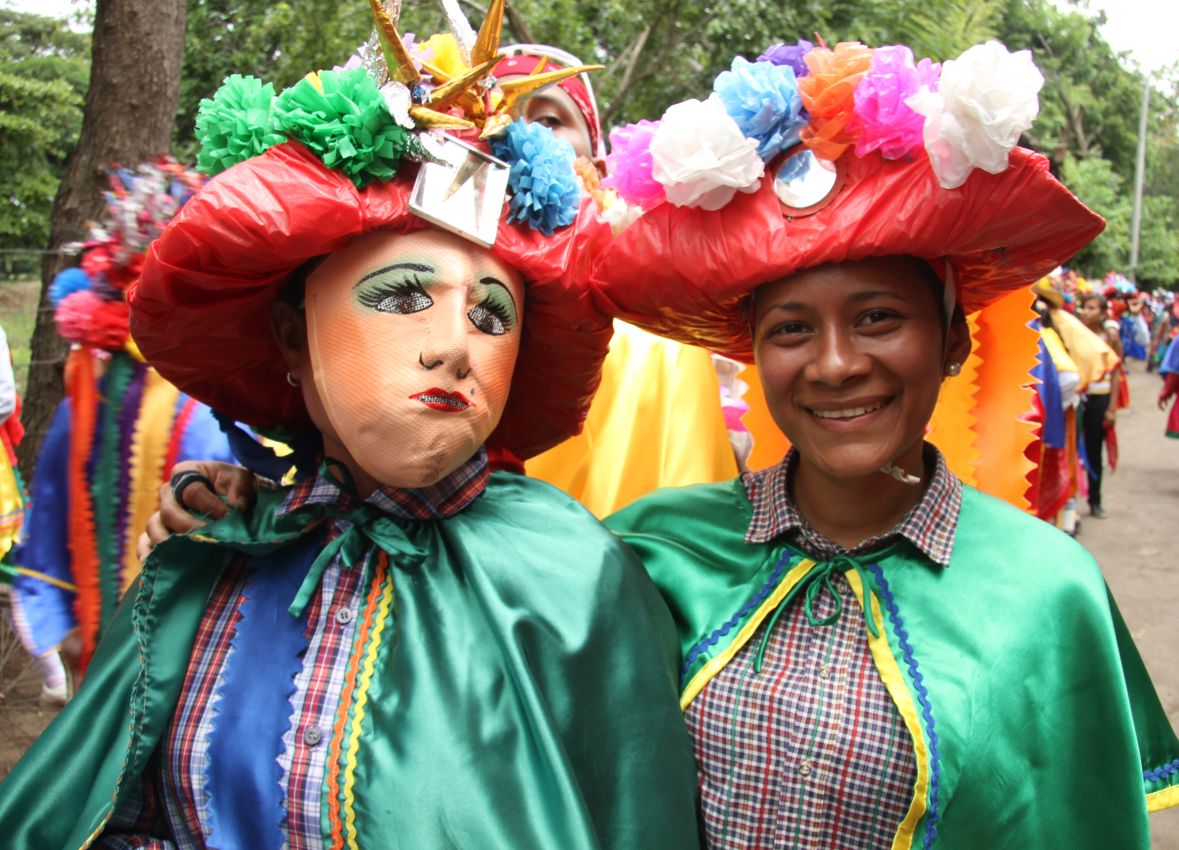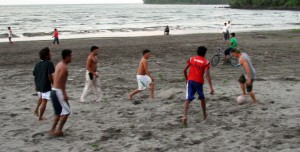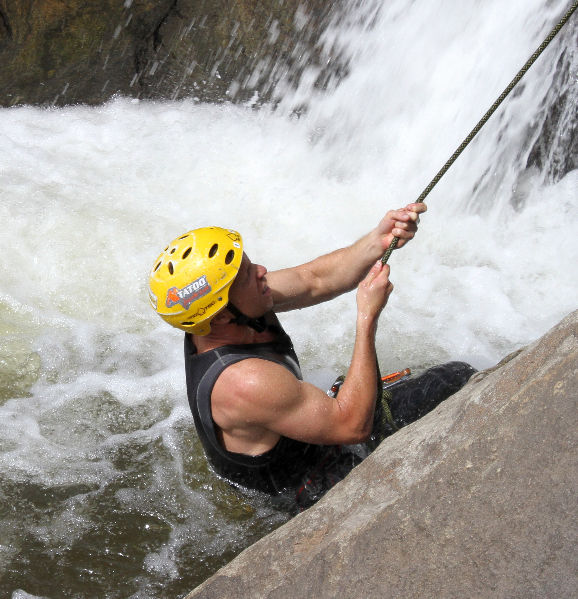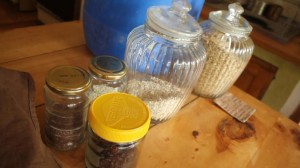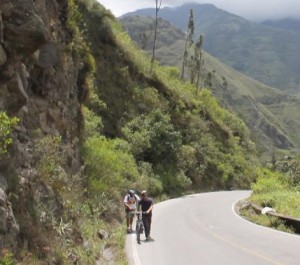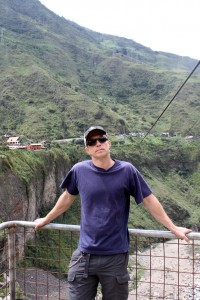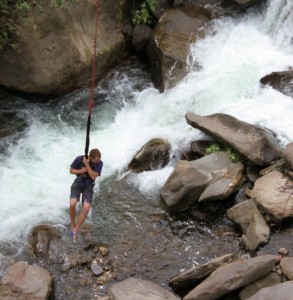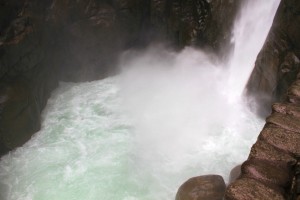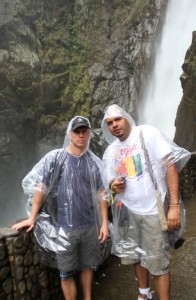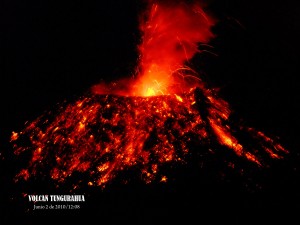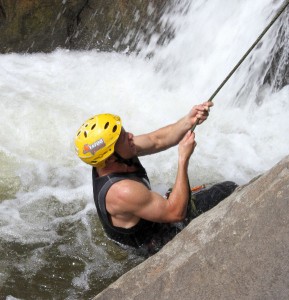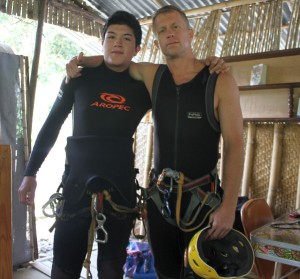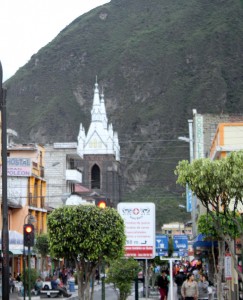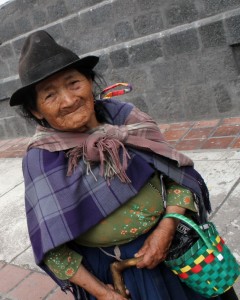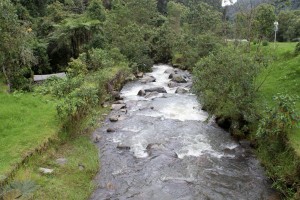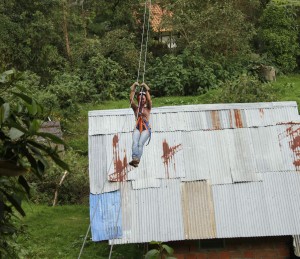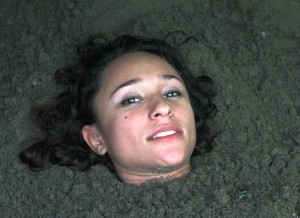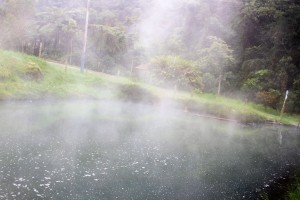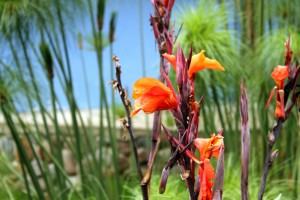Nicaragua was one of those countries I’d been dreaming of for some time. In fact, I bought the guidebook several years ago in what turned out to be a trip that never happened. The guidebook sat on my bookshelf for some time, like a big piece of pie that you knew you were going to eat… eventually. Ok bad analogy I know because pies don’t sit on shelves for years at a time but you get the picture.
Every now and then, I’d pull the pie, excuse me, I mean guidebook off the shelf and thumb through it. As I read through it I’d imagine what it would be like to walk the streets of Managua and see the old church with the clock still stuck at the exact time of the horrible 1972 earthquake that leveled Managua and killed thousands. I’d also walk along the streets of Leon, Granada and even visit the twin volcanic islands of Omotepe.
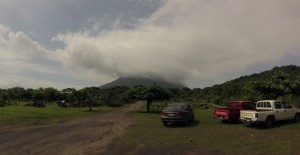
I read how Nicaragua was still very rural with pigs, cows, chickens and horses still roaming even the main highways. I read how baseball was more popular than soccer (futbol), one of the few happy byproducts of U.S. intervention over the years, this one from the early 20th century.
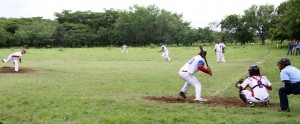
The guidebook pointed out that Nicaragua is becoming the next hotspot budget destination for travelers looking to explore Central America and as I was to finally find out, for good reason. Now in order to be a budget destination it stands that things need be cheap and in general, in Nicaragua they are.
Compared to nearby Belize, Nicaragua has just as much, if not more, natural beauty at a fraction of the price. Supposedly the people of Nicaragua are even more economically disadvantaged compared to Belize and other Latin American countries, but I have to be honest the standard of living in Nicaragua seemed better than Belize and on par with the rest of Latin America. However, please keep in mind I’m going by a grand total of 1 week in each country so I guess I’ll believe Wikipedia… for now.
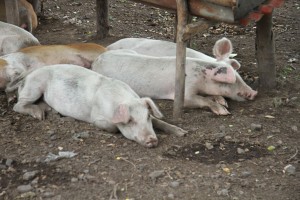
When I finally arrived in Nicaragua it was largely as I expected… but in some ways better. We arrived, in the middle of the night, in the small tobacco town of Esteli. When I woke up the next morning to take the town in, I could already see why travelers flock to Nicaragua. It was simply lovely.
Our scheduled visit to the Rivadella & Recon Cigar tobacco shop was cool, but it was serendipitously interrupted by a stop at the Sonati Hostel. There we met Arnon Dottner, an Israeli ex-patriot and founder of Sonati. Sonati is a non-profit organization that is 100% self-sustainable and working to maintain the environment while helping Nica farmers and students.
One of the many challenges in a country like Nicaragua is convincing farmers, who may be barely scraping by, to farm in a manner that takes a more environmental, long-term focus into view. Like so many worthwhile organizations we met while on our journeys, Sonati works with farmers to show how sustainable agriculture techniques can actually increase their yield as well as their income while preserving or even improving the environment.
Sonati also works with young Nica students to teach them to appreciate & preserve the natural beauty around them. Sonati is largely sustained by its hostels (Leon and Esteli) by offering eco tours. Volunteers mostly run the hostels on a day-to-day basis, but hostel guests can also volunteer to help out in a variety of ways. Such as at local farms, which is where we ran into the fine students & teachers from the Chessum Grammar School in the U.K.
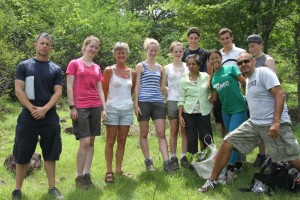
These young British volunteers were doing what is called a home-stay, which means actually living on a family farm in rural Nicaragua. Yes, that means using an outhouse (I’m sure many, if not all of them, for the very first time), sleeping and eating like a local farm family and helping the surrounding community by planting trees, building solar lamps for houses, painting eco-themed murals, and in general helping to beautify the area.
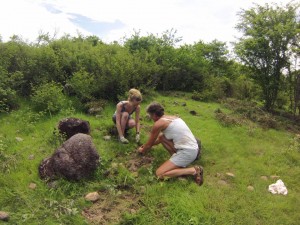
It wasn’t all work and no play for the cheerful bunch from Chessum. While we were there, the whole community was gathered to eat, drink, relax and catch a baseball game. And we’re not talking a last minute pick-up game of rag tag baseball. This was a semi-professional league with uniforms, umpires and equipment… the whole nine yards.
I was enraptured in one of the games and briefly forgot I was on a farm, in a remote part of rural Nicaragua, when I noticed something slippery & squishy around my feet. This was a vaguely familiar feeling (I grew up on a farm in Tennessee) of what standing in fresh cow dung felt like. Ahhh the farm life. I kind of don’t miss it.
I was also jolted back to reality when a screaming foul ball came within inches of taking out our most expensive camera, which was perched like a target on a tripod directly behind home plate. Probably not so smart of us as the shoot was almost over before it got started! But on the flip side we captured some great footage.
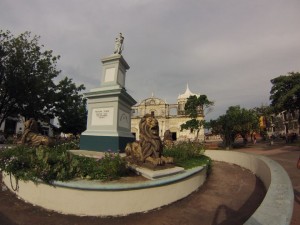
As much as I liked Esteli, it simply can’t compare to the travel darlings of Leon and Granada. While they both rely heavily on tourism, these two cities are very different. While both have loads of history including historic buildings, churches, etc. throughout, Leon is as liberal as Granada is conservative. Leon (Lion in Spanish) is named after the ubiquitous lion statues and monuments all around. What came first the name or the statues, I’m not sure… but it is largely a college town and as such attracts a young, partying adventure/tourist crowd who are there to do things like hike, bike, volcano surf, and canoe.
Arnon from Sonati hooked us up on a volcano hiking and surfing tour that I will probably remember the rest of my life. The hike to the top of Cerro Negro Volcano takes a good 30-45 minutes and at the top the wind is so intense, it makes it hard to do much of anything but hunker down and hang on. The view is incredible from that height and my only regret was that we had all this expensive camera gear to deal with, and I was so concerned about it and the safety of the crew I didn’t really get to enjoy the view as much as I would have liked to. I was genuinely worried about crew getting hurt and the cameras being blown off the side of the volcano.
Maybe I should have been worried about the fact that we were climbing and surfing down a very active volcano (last major eruption just in 1999).
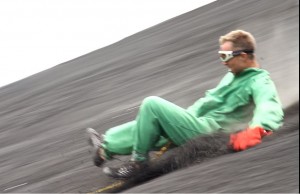
But the trip down is what is so amazing. Volcano boarding while sitting on your butt is pretty easy, and doesn’t require a ton of skill. Just some bravery. Some chose to try it standing up, which I didn’t even consider given the steepness of the terrain. Regardless of your technique it’s not a clean ride. You’re going to get lava rock in every crease and crevice imaginable and I definitely recommend wearing the protective “prison” jumpsuit. Some poor souls were there with nothing but shorts… ouch!
To dial down the adrenaline we headed to nearby Granada, which is a bit more laid back and romantic. We took a horse and carriage tour through the colonial downtown in order to get a typical tourists’ point of view. Salvador, our local driver & guide, reminded me that when another Tennessean came through Granada, he was executed. He was speaking of William Walker ,who briefly took control of the Presidency of Nicaragua in an attempt to unite Central America and make it a part of the Confederate States during the Civil War. That was a while back but just in any case, I kept my Tennessee origins under wraps for the rest of the trip.
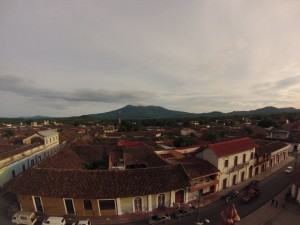
Near Granada is the small town of Masaya, known for its craft market. In fact, most, if not all of the country’s crafts originate from Masaya. The craft market is pretty easy to spot because it’s housed in an early 19th century castle. You can also, usually, take in some excellent Nicaraguan folkloric dancing on weekend nights as we did with the lovely dancers from “Rostros de mi Pueblo” and “Son Latinos”.
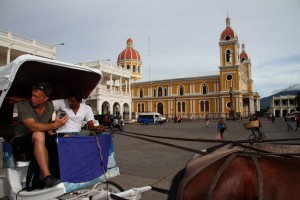
But I think the real beauty of Nicaragua lies in its small, rural towns and villages. We were headed to the small town of Rivas when we happened upon a tiny village that was having a very big Celebration of Santa Ana. Colorfully costumed and masked participants paraded with an image of the Virgin of Santa Ana throughout the one street of the town. With dancing and music the entire way, it was kind of like a mini version of Mardi Gras or Carnival.

These types of celebrations go on at various times of the year and have been going on for generations. The only part that proved problematic was that the parade progressed at a glacial pace down the only road in town. It was about 2 miles from the main highway, and we were stuck behind it with no way around and another scheduled shoot to attend (and no minutes on our cell phone to give anyone a heads up as to our tardiness).
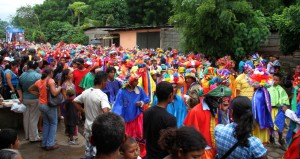
I gently, but rather impatiently guided our stick shift rental car behind the parade, careful not to nudge grandma, the old guy on crutches or the kids who kept insisting to ride on our bumper. I was cursing myself for simply not thinking ahead and parking the car near the main highway in order to walk into town to get the 15 minutes of footage we needed. But alas this is what happens when you get caught up in the serendipitous opportunities that arise when travel and a shooting schedule collide.
My crew and I sighed. It’s a story we know oh too well… half a day spent to get maybe 30 or 45 seconds of footage that will make the final cut.
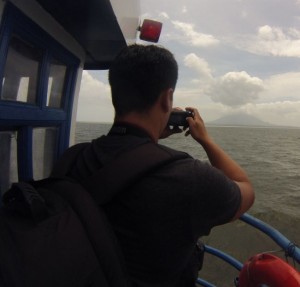
2 hours later when we finally reached the main road. It was off to Rivas where we’d eventually catch a 45-minute or so ferry to the islands of Omotepevia Lake Nicaragua. Omotepe is an indigenous word that roughly translated means “two volcanoes”. I wonder what the word is for “active” as these are also two very active volcanoes (the last activity was a fairly recent 1999).
Omotepe is lovely but isolated and bigger than it looks on a map. You can’t just walk or bike everywhere. We had heard that public transportation was spotty and rough so we took the rental car over with us on the ferry, which was relatively cheap. We were able to drive across most of the two islands and get a real sense of the lifestyles on each unique island.
Managua is usually the first stop for tourists when visiting Nicaragua, but since we bussed in from Honduras (and it was raining the first time we passed through) it turned out to be our last stop before catching a bus onward south to Costa Rica. Other than the old city, which had been leveled by the 1972 earthquake, the guidebook was pretty sparse (and dated) with information on Managua.
Luckily, I have a good Nica-American buddy in Los Angeles with relatives living in Managua. My buddy Francisco hooked me up with his brother Hader who gave us an insider’s tour. You don’t need a guide to see the incredible amount of construction going on (some say the Sandinista government currently in power can’t afford it and will regret it in a few years when the financing comes due, but for now it’s exciting to see it take shape).
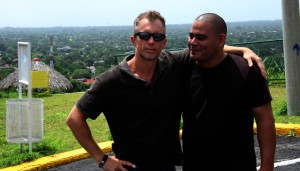
It seems an ambitious attempt to completely renovate Managua’s infrastructure (or perhaps to spend tax money as quickly as possible), but Hader provided us with some of the unknown history of the old downtown. Most of it now functions as the government center.
I stood in awe, finally taking in the famous clock in the abandoned buildings from that fateful Christmas Eve in 1972. The devastating earthquake hurt more than buildings. It would displace tens of thousands and claim the lives of thousands of Nicas, including baseball star and humanitarian, Roberto Clemente who had rushed to deliver supplies. Clemente felt moved to do something because so much international aid was not getting through to the people who needed it most: most say it was due to a corrupt Nicaraguan government at the time. Sound familiar… Haiti anyone?
Managua gets short shrift in most guidebooks, but it shouldn’t. The city is undergoing a renovation that will, if seen through, potentially make it one of the more modern Central American capital cities. The lakefront area near Ciudad Viejo (Old City) with restaurants and bars looks like it would be a blast on a weekend night.
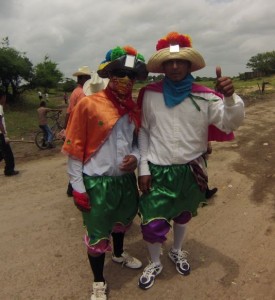
Nicaragua… rural landscapes, colonial buildings, city sophistication, baseball… friendly folks and farms with pigs, horses, ducks… plus, of course lots and lots of cow dung… I felt right at home!

